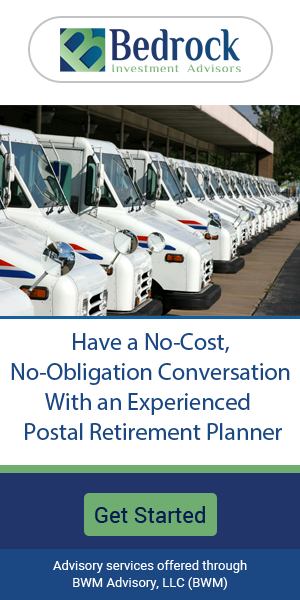Key Takeaways
- If you’re a federal employee or retiree, FEHB changes in 2025 could save you more than just money—it might improve your overall healthcare experience.
- Coordinating FEHB with Medicare could be the retirement strategy that keeps your health coverage affordable while offering excellent protection.
The Healthcare Coverage That’s About to Transform Your Retirement
We all know healthcare can get pretty expensive, especially as we age and need more medical attention. That’s why understanding the Federal Employees Health Benefits (FEHB) program—and more specifically, how it will evolve in 2025—is crucial if you’re nearing retirement. The good news? FEHB could be a game-changer for you, especially if you coordinate it with Medicare.
- Also Read: Want to Leave Before 62? Here’s the Tradeoff Most Federal Workers Don’t Consider
- Also Read: 3 Ways CSRS Retirees Can Avoid Social Security Reductions Due to the Windfall Elimination Provision (WEP)
- Also Read: Your Next Federal Pay Raise Might Come With a Tradeoff—Here’s What to Watch
What’s Changing in 2025?
You’re probably aware that FEHB has long been one of the most reliable healthcare programs for federal employees and retirees. As of 2024, it’s still offering strong protection, but in 2025, several shifts are coming. First off, the FEHB premiums are set to rise. The average premium increase is estimated at around 13.5%, which may sound alarming at first. But don’t let this number scare you off—this is where careful planning comes into play.
While higher premiums aren’t something anyone looks forward to, it’s important to consider what you’re getting in return. FEHB plans are expected to offer even more comprehensive coverage in 2025, which could make the higher cost worth it. If you’re approaching Medicare eligibility, the combination of FEHB and Medicare could result in significant savings despite the premium hike.
Why You Should Care About FEHB and Medicare Together
Once you hit 65, Medicare becomes a major player in your healthcare coverage strategy. If you’re like most federal employees, you’ve probably wondered whether it makes sense to keep FEHB or drop it once you’re eligible for Medicare. Here’s why keeping both could be a smart move: coordination.
Coordinating your FEHB with Medicare is one of the most powerful ways to manage your healthcare expenses. In 2025, if you’re retired and eligible for Medicare, it can become your primary insurance, with FEHB acting as secondary coverage. This means that Medicare takes the brunt of the costs, while FEHB can pick up the remaining out-of-pocket expenses, like deductibles and co-pays. The result? You get more extensive coverage without draining your savings.
FEHB Premiums: What You Need to Know for 2025
Like I mentioned earlier, the rise in premiums is something to be aware of. But before you panic about the numbers, let’s talk strategy. For many retirees, opting to keep both FEHB and Medicare Part B makes financial sense, even with the 2025 premium increases.
The trick is to consider the long-term benefits of this combo. While you’ll be paying Medicare Part B premiums alongside your FEHB plan, the reduced out-of-pocket costs from having two levels of insurance can save you big bucks over time. And since healthcare costs tend to rise as you age, having two layers of coverage means fewer surprises when the bills come in.
Understanding the Coverage You’ll Get in 2025
Here’s the good news: despite the premium increase, FEHB plans are expected to continue providing some of the best healthcare options available for federal employees. You’ll still have access to a broad network of doctors, hospitals, and specialists. Prescription drug coverage, hospital stays, and preventive care will remain covered, just as they are in 2024.
But it’s the enhanced benefits that really stand out. With more comprehensive options expected in 2025, your healthcare needs could be met even more effectively, whether you need routine check-ups or more specialized care. And if you coordinate FEHB with Medicare, you could pay less in deductibles and co-pays than someone relying on just one plan alone.
When to Make Your Move: Open Season 2024
Here’s something you don’t want to miss—Open Season for federal benefits runs from November 11 to December 9, 2024. This is your window to make changes to your FEHB plan for 2025. If you’re thinking about adjusting your coverage, now’s the time to act.
During Open Season, you can review your current plan and see if there’s a better option available that fits your retirement needs. And don’t forget—this is also a good time to look at how your plan will align with Medicare if you’re about to become eligible. Make sure you’re getting the most value out of both.
What About the Postal Service Health Benefits (PSHB)?
If you’re a postal worker, you might be wondering how the Postal Service Health Benefits (PSHB) program fits into all this. By 2025, postal employees will transition from FEHB to the PSHB program, which is tailored specifically for USPS workers and retirees. While it mirrors much of the FEHB coverage, there are some differences, especially in premium costs and how the plans are structured.
For postal workers, the transition to PSHB could bring similar benefits to those of FEHB, with adjustments to premium costs. However, much of the same advice applies—coordinating your PSHB plan with Medicare could offer serious savings and coverage benefits. If you’re a current USPS employee or retiree, it’s important to stay on top of these changes during Open Season.
Keep an Eye on Rising Healthcare Costs
No one wants to think about growing medical expenses, but it’s a reality we can’t ignore. Healthcare costs are expected to keep climbing beyond 2025, and retirees are often hit the hardest. This is why paying attention to your FEHB options now is so important. While you might be facing higher premiums in 2025, the benefits you receive could outweigh the costs, especially if you coordinate your coverage with Medicare.
It’s also worth noting that FEHB is still one of the most cost-effective healthcare options for federal retirees. Private plans often come with higher costs and fewer benefits, so sticking with your federal benefits could keep more money in your pocket in the long run.
Getting the Most Out of Your Healthcare Coverage
Whether you’re looking at FEHB, PSHB, or a combination with Medicare, the key is to plan ahead. The changes coming in 2025 will impact all federal employees and retirees, but if you take the time to understand your options and make adjustments during Open Season, you can stay ahead of the game.
With healthcare costs rising and the possibility of more medical needs in the future, making smart choices about your healthcare now can have a huge impact on your retirement. So, take a close look at your FEHB options, consider how they’ll work with Medicare, and get ready for a retirement where you’re covered—no matter what.













